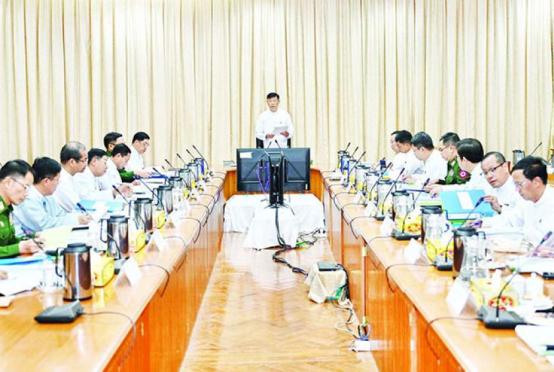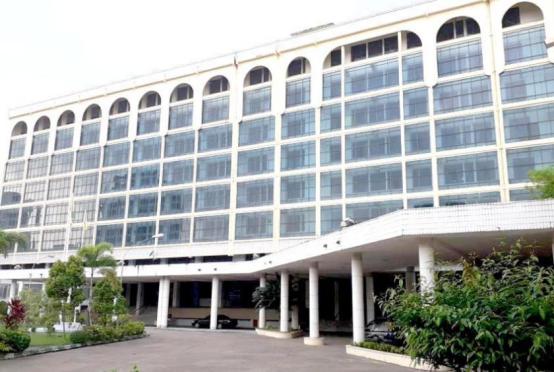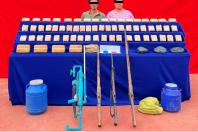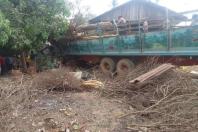Dhaka (The Daily Star) - Exports of traditional jute goods have been falling in the face of competition from low-priced polypropylene and synthetic goods as well as a shrinking demand in the traditional markets abroad.
The domestic market is not growing much either as the government has failed to fully enforce the Mandatory Jute Packaging Act passed nine years ago.
And although exports of diversified jute products show a rising trend, it is too little to rescue the sector involving 4 crore people, according to export data and industry people.
“This is an exceptionally bad year. Shipment has declined both in terms of value and volume. This is a very bad news for the sector,” said Mahmudul Huq, deputy managing director of privately-run Janata Jute Mills.
Ironically though, Bangladesh is a major global supplier of jute products. It meets 97.5 percent of the global demand for jute yarn, 70 percent of raw jute and 46 percent of sacks and bags.
On average, the country produces 15 lakh tonnes of jute per year. Of the volume, private and public mills process about 10 lakh tonnes to make yarn, sacks and other jute goods. The rest is used domestically or exported as raw jute.
Currently, some 200 private and 26 public jute mills are in operation.
SHRINKING GLOBAL MARKET
The country’s jute industry relies heavily on export, which accounts for more than 80 percent, because of a lukewarm response from the domestic market.
But in recent years exports of jute and jute goods nosedived due to the falling demand in Turkey and India, two major markets.
Shipment of jute goods, including jute yarn, which is the main export earner in the sector, dipped 23 percent year-on-year to $532 million until March of the current fiscal year, according to the Export Promotion Bureau.
“Jute yarn exports are going through an unprecedented crisis that we have never seen before. The slump in export earnings may continue,” Md Shahjahan, chairman of Bangladesh Jute Spinners Association (BJSA), said in a statement on March 28.
The BJSA, which represents 82 private spinning mills, said that in the past the Turkish market accounted for 36 percent of Bangladesh’s total jute yarn exports, followed by China and India.
But Turkey is facing a serious economic and political crisis. Its currency, Lira, depreciated 40 percent against the US dollar, affecting demand for imports from its carpet industry.
And the Indian market shrunk after New Delhi slapped anti-dumping duty on Bangladesh’s jute goods, the BJSA said.
Until 1980s, there had been a huge demand for CBC, especially in the US and European markets. But it almost died over the years, said Mushtaq Hussain, owner of The Golden Fibre Trade Centre Limited, a private jute mills.
The Middle East, particularly Iran, used to be a big market for hessian. But its low-cost substitute, plastic, has taken that market, he added.
For decades, jute yarn has accounted for two-thirds of the total annual export earnings from jute and jute goods.
Export earnings from other traditional jute products -- hessian, sacking and Carpet Backing Cloth (CBC) -- have also been falling since its peak at $237 million in 2012-13, according to state-run Bangladesh Jute Mills Corporation (BJMC).
In 2017-18, export earnings from these products stood at $122 million, according to BJMC and privately-run Bangladesh Jute Mills Association (BJMA).
Currently, BJMC has unsold jute goods worth Tk 755 crore for a lack of buyers. In 2017-18, the state corporation incurred a loss of Tk 466 crore.
WHY THE FALL?
The trend of falling export began after 2010, and both external and internal factors are responsible for this, said Khondaker Golam Moazzem, research director at the Centre for Policy Dialogue.
The external factors include falling global demand, poor competition against polypropylene products and slapping of anti-dumping duties on Bangladeshi jute goods.
On the other hand, poor performance by the BJMC, market-distorting activities and limited capacity of private millers as well as limited diversified products are among the internal factors, Moazzem said.
Industry people said exports to India, once a big market, dipped after the neighbouring country slapped anti-dumping duty on Bangladesh’s jute goods on allegations of selling jute goods in Indian market at prices lower than in local market.
BJMC’s export to India slumped to 8,987 tonnes in 2017-18 from 36,435 tonnes in 2015-16, the year before it imposed anti-dumping duty.
“The private sector could not perform well either in the global market,” Moazzem said, adding that a lack of innovation in making diversified products was another reason why exports did not grow.
In the meantime, the market for polypropylene products has found a strong footing due to low petroleum prices, he added.
DIVERSIFICATION: INDIA DOING BETTER
India and China are two major players in making diversified jute goods, said M Sajjad Hussain Sohel, president of Bangladesh Jute Goods Exporters Association (BJGEA).
India in particular has made a lot of progress in this regard because of government support for the last two-three decades, he added.
It started implementing the mandatory packaging law in the early 1990s. The government also provides Minimum Support Price (MSP) to ensure fair prices for growers, said Mushtaq, owner of Golden Fibre Trade Centre Limited.
The Indian government also supports the private sector to renovate mills by replacing old machinery with modern ones.
Because of this renovation, India’s productivity has increased while its operation cost has come down.
In Bangladesh, however, most jute mills, especially those run by the government, still use decades-old machinery whose production capacity more than halved over the years.
And although the government provides a 20 percent cash incentive for making diversified jute products, the prices of raw materials are very high.
India has been giving such cash incentives for many years, which has made the industry stronger and encouraged businesses to invest in diversification, Mushtaq said.
In contrast, only a handful of private and public mills and small entrepreneurs are producing diversified jute goods.
Rina Parveen, executive director of Jute Diversification Promotion Centre, said a major problem here is the high prices of raw materials, which increases production cost.
DOMESTIC MARKET IS KEY
CPD’s Moazzem said Bangladesh’s jute sector needed a vibrant domestic market like that in India, where most jute goods are used domestically.
In 2017-18, for example, India produced 11,78,000 tonnes of jute products, of which 11,12,000 tonnes were used domestically, according to Indian government data.
“To promote jute products in domestic market, a full implementation of the mandatory packaging law is necessary,” said Moazzem.
Under the Mandatory Jute Packaging Act 2010, 19 agricultural and industrial commodities, including food grains, sugar and fertiliser, must be packaged in jute bags, but that remains mainly on paper.
In a letter to the jute ministry in early April, the BJMA urged the government to enforce the law to save the industry.
On the other hand, the BJSA demands more mobile court drives to ensure implementation of the law and help recover the sector.
https://www.thedailystar.net/frontpage/news/golden-fibre-troubled-waters...
















